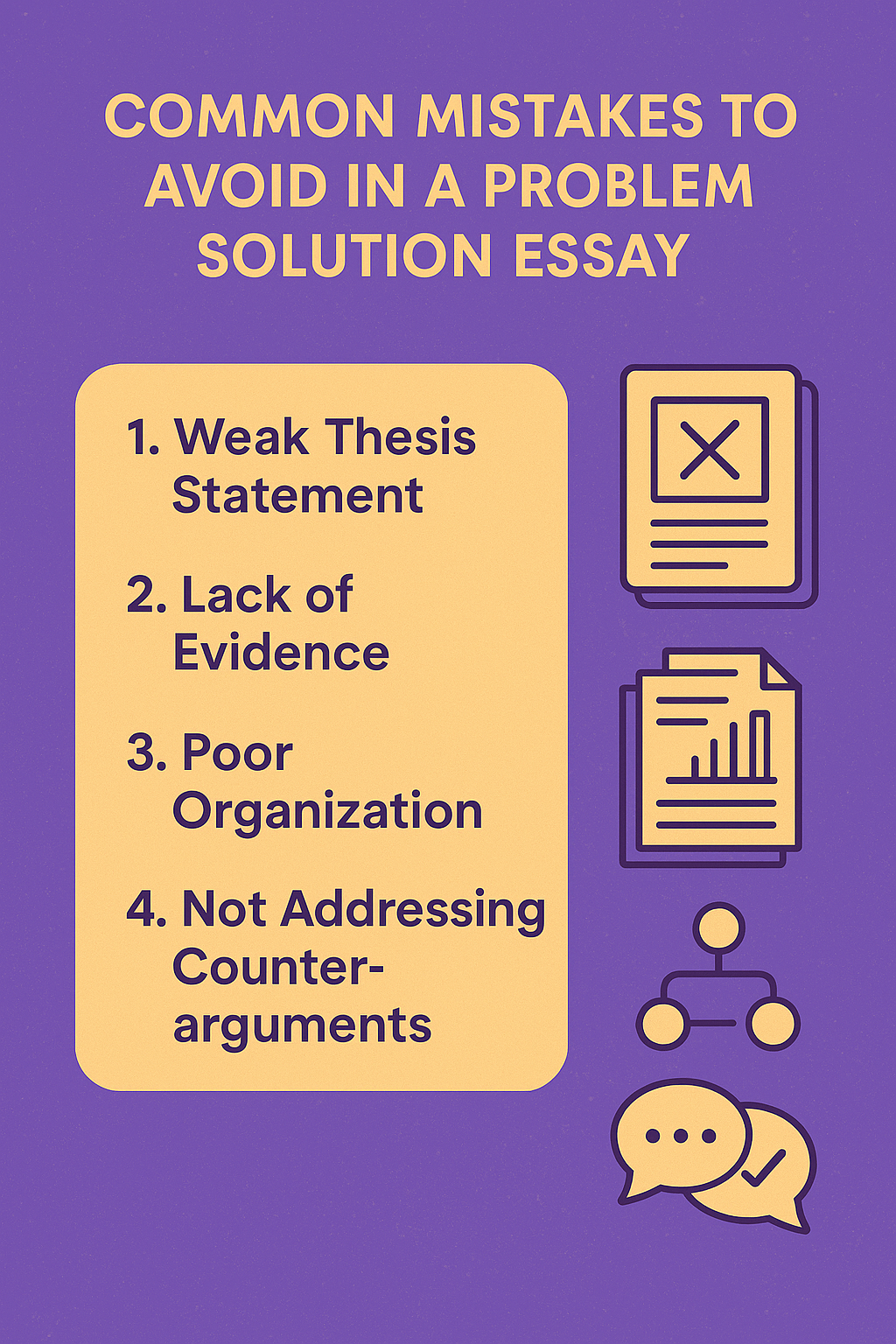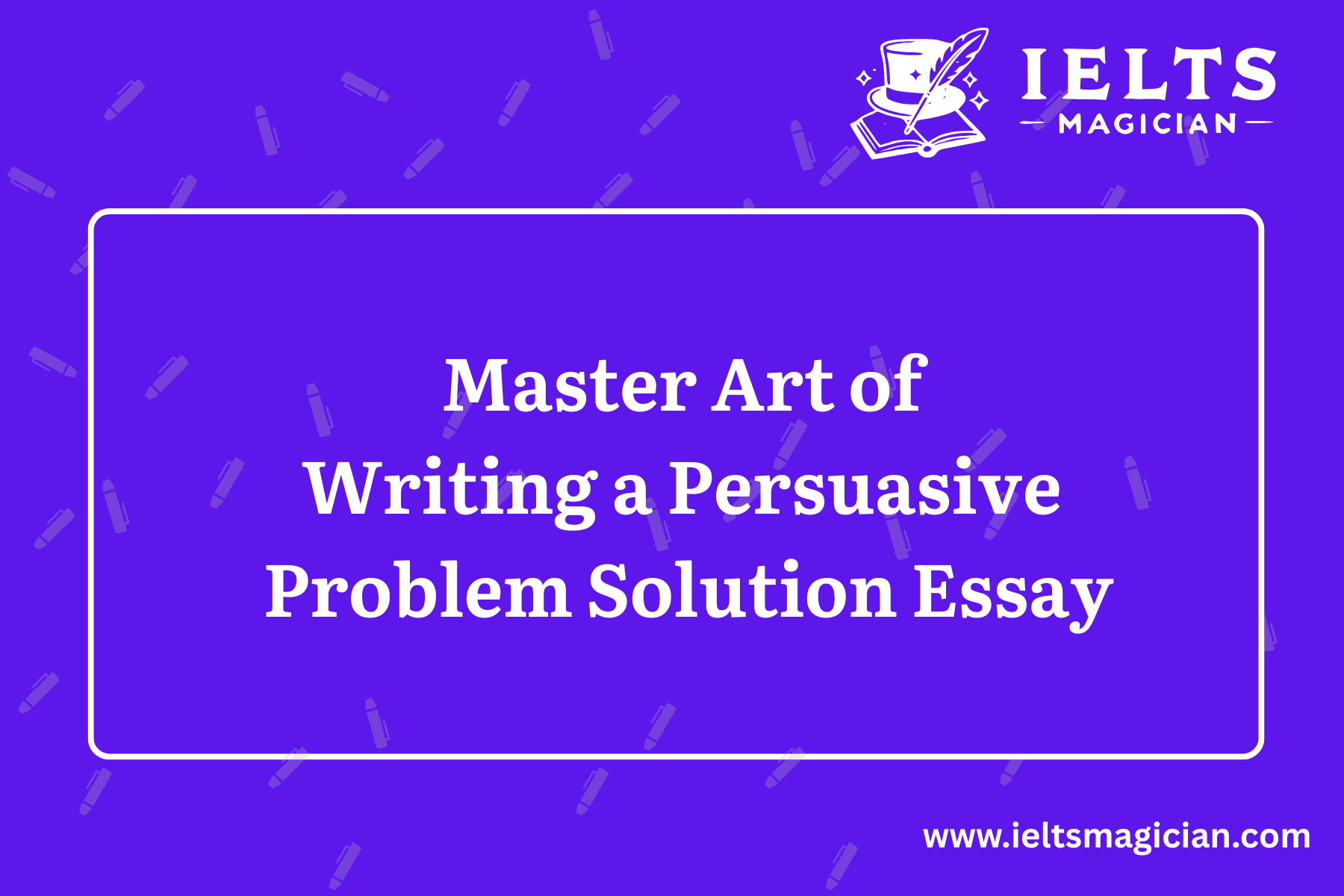A problem solution essay is an essential form of IELTS writing task 2 where the writer identifies a problem and proposes a solution to it.
Whether you’re a student tasked with writing an essay for an assignment or someone seeking to develop your critical thinking skills, mastering this writing style is crucial.
In this guide, we will walk you through the structure, organization, and writing techniques that will help you craft an effective and persuasive problem solution essay.
What is a Problem Solution Essay?
A problem solution essay in IELTS Writing task 2 presents a clearly defined problem, analyzes it, and then proposes a well-reasoned solution. The goal is to persuade the reader to acknowledge the problem’s significance and agree with the proposed solution. This type of essay often appears in academic and professional contexts, as it tests both writing and critical thinking abilities.
Key Elements of a Problem Solution Essay
- Clarity: Your writing must be clear and concise, ensuring the reader can easily understand the problem and the solution you’re proposing.
- Organization: A strong organization is essential to guide your reader through the essay. Your essay should have a structured format, including an introduction, body paragraphs, and a conclusion.
- Evidence-Based Support: The effectiveness of your solution depends on how well you support it with evidence, such as statistics, studies, or real-life examples.
- Logical Flow: Ensure that ideas flow logically from one paragraph to the next. Use transitions to connect your points smoothly.
Steps to Write a Problem Solution Essay
Step 1: Choose a Relevant Topic
To start, choose a topic that is relevant and interesting. Pick a problem that is timely, has significant consequences, and is something that can be solved. For example, a great topic could be the issue of climate change and potential solutions like reducing carbon emissions.
Step 2: Write the Introduction
The introduction should introduce the problem and present your thesis statement—the solution you will propose. Make sure to engage your audience right from the start by stating the importance of the issue and why it needs urgent attention.
Example Introduction:
“Plastic pollution has reached critical levels globally, threatening marine life and the environment. To combat this, one effective solution is promoting biodegradable alternatives to single-use plastics. This essay will explore how such alternatives can address this growing issue.”
Step 3: Develop the Body Paragraphs
The body paragraphs of your essay are where the bulk of your argument takes place. Each paragraph should focus on one key aspect of the problem or solution.
- Problem Identification: Describe the problem in depth, including its causes and effects.
- Solution Presentation: Propose a clear, actionable solution, explaining how it can resolve the problem.
- Supporting Evidence: Use examples and research to support your proposed solution. This could be facts, case studies, or statistical evidence.
- Rebuttal: Address potential concerns about your solution and explain why they don’t undermine its effectiveness.
Example Body Paragraph:
“Plastic pollution is a growing environmental crisis, with over 8 million tons of plastic entering the oceans each year. This threatens marine life, damages ecosystems, and pollutes our beaches. One promising solution is to switch to biodegradable plastics, which degrade faster and have less long-term environmental impact. Studies show that biodegradable plastics break down in months compared to hundreds of years for traditional plastics, making them a more sustainable choice.”
Step 4: Write the Conclusion
The conclusion should summarize the key points made in the body paragraphs and reinforce the thesis statement. Leave the reader with a sense of urgency or a call to action.
Example Conclusion:
“In conclusion, reducing single-use plastics through the promotion of biodegradable alternatives is a viable solution to the global plastic pollution crisis. By adopting these solutions, we can significantly reduce environmental harm and protect marine life for future generations.”
Step 5: Revise and Edit
After writing your essay, take the time to revise and edit. Make sure the argument is clear, the ideas are logically organized, and the writing is concise. Eliminate unnecessary words or sentences that don’t contribute to the main point.
Common Mistakes to Avoid in a Problem Solution Essay
- Weak Thesis Statement: A vague thesis statement can confuse the reader. Your solution should be clear and specific.
- Lack of Evidence: Without strong supporting evidence, your argument will lack credibility. Always use data, statistics, or expert opinions.
- Poor Organization: If your essay is not structured properly, the reader may struggle to follow your argument. Make sure there’s a clear flow from introduction to conclusion.
- Not Addressing Counterarguments: Not considering opposing viewpoints may weaken your argument. Acknowledge them and show why your solution is still the best option.

How to Make Your Problem Solution Essay More Persuasive?
- Use Strong Evidence: Back your solution with research, statistics, and expert opinions. The more credible your evidence, the more persuasive your essay will be.
- Ensure a Logical Structure: Organize your ideas in a way that makes sense and supports the argument. Each paragraph should transition smoothly to the next.
- Address Potential Objections: Show the reader that you’ve considered all sides of the issue and explain why your solution is still the most viable.
Problem Solution Essay Checklist:
- Clearly identify the problem.
- Propose a feasible solution.
- Support your solution with evidence.
- Use a logical structure (Introduction, Body, Conclusion).
- Revise for clarity, coherence, and conciseness.
Real-Life Examples of Problem Solution Essays
For inspiration, check out these real-world examples of problem-solution essays:
- The Rise of E-Waste: Addressing the growing problem of electronic waste and proposing solutions such as e-waste recycling and eco-friendly production.
- Mental Health in Schools: Exploring the challenges of student mental health and advocating for mental health programs and support systems in schools.
These examples provide a framework for understanding how a problem-solution essay can be applied to various issues, from environmental concerns to social problems.
FAQs About Problem Solution Essays
1. What is the ideal structure for a problem solution essay?
A typical problem solution essay has an introduction, body paragraphs that explain the problem and solution, and a conclusion that reinforces the thesis.
2. How do you identify a good topic for a problem solution essay?
Choose a topic that is both relevant and feasible to solve. Make sure it’s an issue that can be addressed with actionable solutions.
3. How long should each paragraph be in a problem solution essay?
Each paragraph should be about 4-6 sentences, focusing on one key point. Ensure the paragraphs are concise but thorough.
4. How can I make my problem solution essay more persuasive?
Provide strong evidence, use logical reasoning, and address counterarguments to strengthen your case.
5. What are common mistakes to avoid in a problem solution essay?
Avoid vague arguments, lack of evidence, and poor organization. Make sure your solution is both feasible and well-supported.
Conclusion: The Importance of Problem Solution Essays
A well-written problem solution essay not only helps you develop your writing and critical thinking skills but also allows you to engage with real-world issues and propose practical, feasible solutions. By following the step-by-step guide outlined here and using the tips for making your essay more persuasive, you can create an impactful and compelling essay.

